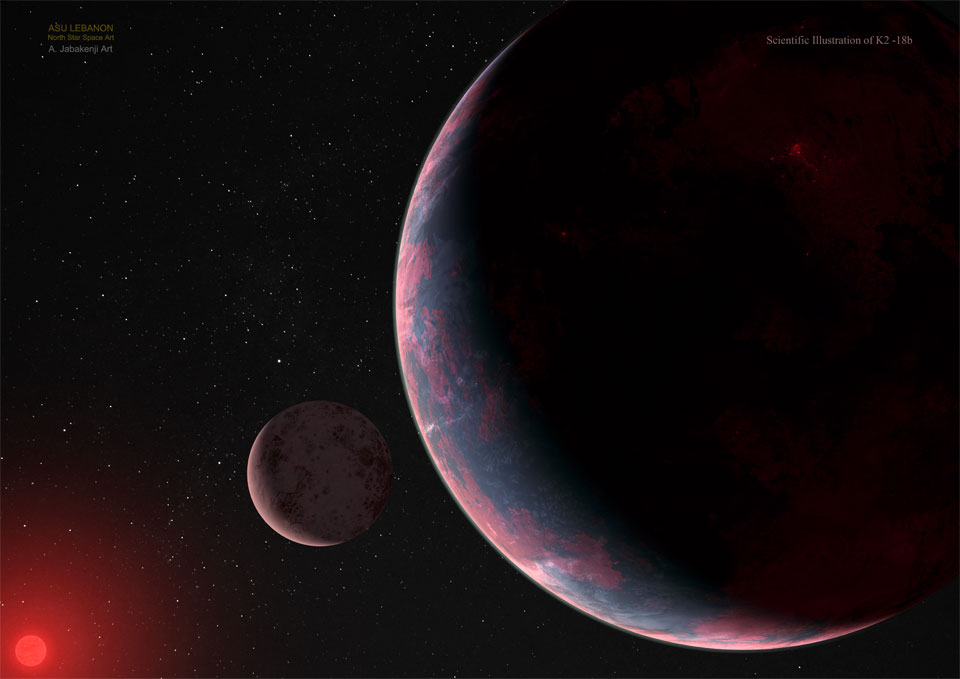2023年9月20日
Methane Discovered on Distant Exoplanet
Illustration Credit: Ahmad Jabakenji (ASU Lebanon, North Star Space Art); Data: NASA, ESA, CSA, JWST
Explanation: Where else might life exist? One of humanity’s great outstanding questions, locating planets where extrasolar life might survive took a step forward in 2019 with the discovery of a significant amount of water vapor in the atmosphere of distant exoplanet K2-18b. The planet and its parent star, K2-18, lie about 124 light years away toward the constellation of the Lion (Leo). The exoplanet is significantly larger and more massive than our Earth, but orbits in the habitable zone of its home star. K2-18, although more red than our Sun, shines in K2-18b‘s sky with a brightness similar to the Sun in Earth’s sky. The 2019 discovery of atmospheric water was made in data from three space telescopes: Hubble, Spitzer, and Kepler, by noting the absorption of water-vapor colors when the planet moved in front of the star. Now in 2023, further observations by the Webb Space Telescope in infrared light have uncovered evidence of other life-indicating molecules — including methane. The featured illustration imagines exoplanet K2-18b on the far right orbited by a moon (center), which together orbit a red dwarf star depicted on the lower left.
Tomorrow’s picture: space tag
在遥远的系外行星发现了甲烷
图示提供: Ahmad Jabakenji (ASU Lebanon, North Star Space Art); 数据: NASA, ESA, CSA, JWST
说明: 还有那些地方可能有生命存在?于2019年,自从在遥远系外行星K2-18b的大气里发现大量的水蒸气,人类一大悬而未决的问题:寻找可能有生命存在的系外行星,又向前迈进了一步。这颗行星及其母星K2-18,位于狮子座方向约124光年远之处。这颗系外行星远大于地球,质量也较大,然而却在母星的宜居带内运行。K2-18虽然比我们的太阳红,但在K2-18b的天空中,绽放着与地球天空中的太阳相近的亮度。2019年发现K2-18b大气里的水,是经由分析哈勃、斯皮策、及开普勒等3个太空望远镜的数据,所使用的标记为:此行星在母星前方移动时,与水蒸气相对应的色光受到吸收。快转到2023年,韦伯太空望远镜在红外光波段的进一步观测,发现了其他生命标记分子(包括甲烷)存在的证据。上面这幅主题图示,想像最右侧的系外行星K2-18b及其卫星(中间),一同环绕左下方的红矮星运行之景象。
明日的图片: space tag



